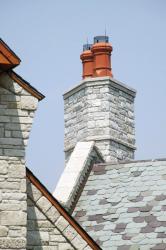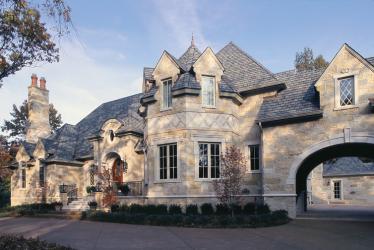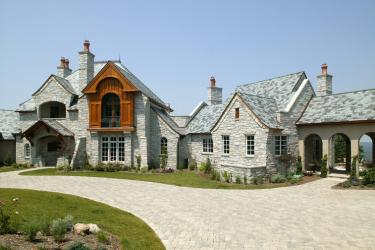Settled by the French and named for King Louis IX, St. Louis’ enduring affinity for all things francais was probably inevitable. Drive through the metro area’s upscale neighborhoods and custom home developments today, and you’re almost sure to find at least one residence that could be described as “French provincial.”
The origins of this architectural style can be traced to the grand chateaux and large farmhouses built in the rural provinces of France during the 17th and 18th centuries. This was a crucial period in French history, coinciding with the Age of Reason and eventually leading to the French Revolution. In architecture, the era culminated in a return to the simplicity and symmetry of Neoclassicism.
Home elevations of the time tended to be symmetrical and flat, with at least two stories, steep-pitched roofs (originally slate or clay tile), matching chimneys and tall multi-paned windows with wood shutters or rounded arches. Materials and colors were drawn from nature, ranging from the grays and whites of stone to warm browns, beiges and the deep reds of brick and clay. Since France consisted of many provinces, however, certain architectural features varied from region to region.
Here in the U.S., French provincial design gained its foothold in the 1920s, brought back by soldiers returning from the European theater following World War I. Early American versions were an amalgam of features, referred to as “French eclectic” and embraced by affluent owners building their country homes. The style experienced a revival in the 1970s and, since then, has been a consistent favorite with homebuyers of all types.
French Country is usually associated with the design and décor typical of cottages in sunny Provence, where landscape colors—golden yellows, rich reds and browns, dark greens and blues—are emphasized. Other provincial features that have been popular at various times are balconies and stone towers with conical roofs, reminiscent of the silos often attached to traditional farmhouses in Normandy.
Whether inspired by Provence or Normandy, characteristic architectural features may include a mansard, hip, or flared roof, combinations of brick, stone, and/or stucco, round-topped dormers, arches, keystones, corner quoins, wood and painted shutters, copper-roofed bays and windows or gables that break through the eave line.
Reflecting the rustic warmth and casual elegance of the French countryside, these designs translate well to the relaxed lifestyle preferred by many of today’s homeowners. Basic elements focus on soft lines, stonework and colors taken from nature. Texture is similarly important and may carry through to the interior with distressed wood beams and plaster or stone walls. Perhaps best of all, the design is highly flexible, allowing for numerous exterior options and a wide range of furnishings, from formal to farmhouse cozy.
Timeless and sophisticated, yet eminently comfortable, French provincial styling is likely to remain popular with St. Louisans for many years to come.











